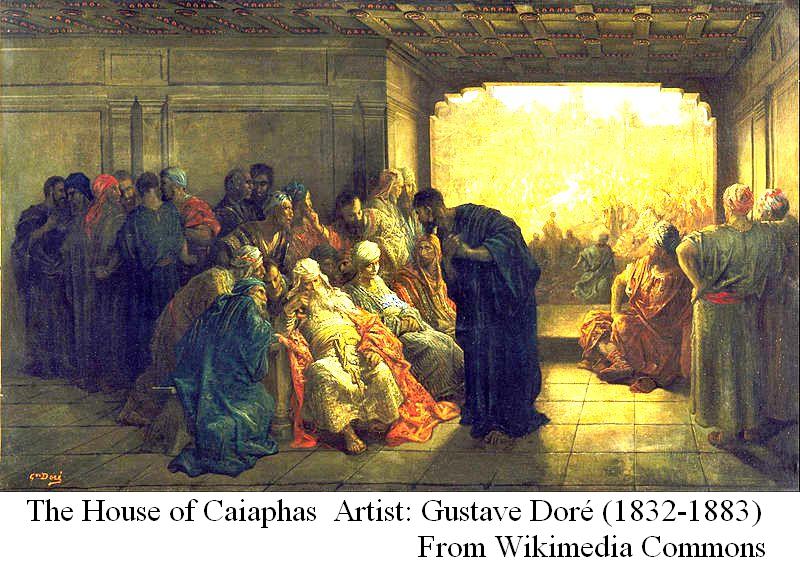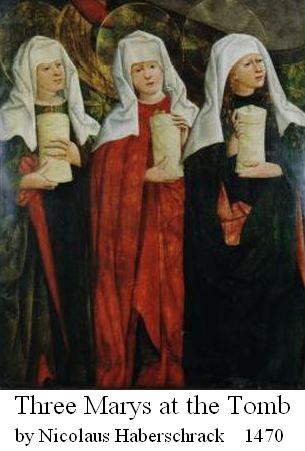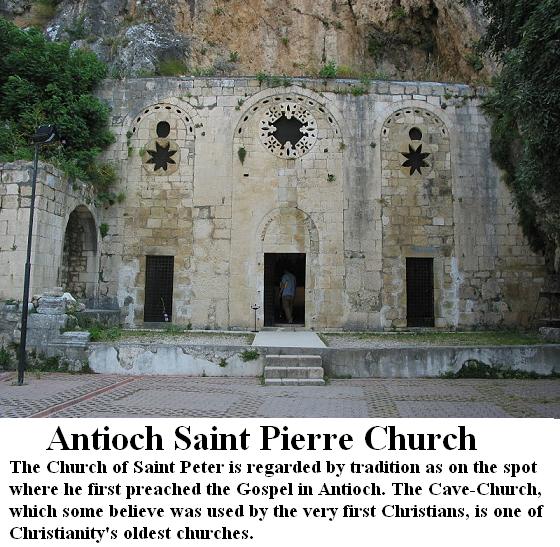Review:The baptism of the Holy Spirit (Many of the first will be last)
Jesus said, "The person old in days won't hesitate to ask a little child seven days old about the place of life, and he will live. For many of the first will be last, and will become a single one." (Thomas 4)
The Jews circumcise their babies on the eighth day after the each baby is born. Therefore a small child seven days old is not yet qualified as a Jew or even as a man. In contrast, the old man is socially respected as the wise man familiar with Jewish law. However Jesus overturns such common sense in this verse. In the Gospels of Mark, Matthew and Luke, too, Jesus teaches his disciples to accord little children priority over wise men and overturns Jewish traditional values based on law and wisdom.
"Little children" symbolize primitiveness. Men, who find the place of life or Kingdom of Heaven in the simple and boring things at first glance like stones and sticks, are the true wise men. Jesus says, "Split a piece of wood; I am there. Lift up the stone, and you will find me there." (Thomas 77)
'To become a single one' means 'to return to the primitiveness which has not been split into male and female.' In the Gospel of Thomas, the phrase of 'single one' is repeatedly used as a keyword. According to Mr. Sasagu Arai, 'a single one' means 'one who transcends division and recovers the original integration (propator = original Self) in himself.' And the reign of original Self means realization of the kingdom of God.
During the later period of Tang Dynasty in China, a monk asked Zen Master Xiang-yan Zhi-xian (香厳智閑?-898), "Master, what is the way?" Xiang-yan said,
"A dragon is singing in a withered tree." The monk said that he did not understand. Xiang-yan said again, "The eye is in the skull." One, who has found original Self, can hear dragons' singing in withered trees and can find shining eyes in the skull. In other words, the kingdom surpassed space and time is manifest.
Many of the first will be last
Jesus' words saying "many of the first will be last" is also found in the Gospel of Mark and Matthew. According to Mr. Sasagu Arai, this word is used as so-called "flying logition" in different contexts. In the Gospel of Mark and Matthew, it suggests that values will be reversed at the forthcoming end. The Gospel of Thomas takes one step further and asks, "If you seek to truly 'live,' you should return to the beginning (of the world). And if you do so, you will be able to find 'Kingdom of Heaven' in common daily things. Dogen Zenji (道元禅師1200-1253), the founder of the Japanese Soto Zen School (曹洞宗), also advices in his Scripture 《Fukan-zazengi (普勧坐禅儀The Way of Zazen Recommended to Everyone)》, "Learn to withdraw, turning the light inwards, illuminating the Self. (Doing so), your body and mind will drop off naturally, and original-Self will become manifest." In other words, the reign of original Self, that is, realization of the kingdom of God is manifest.
In the Gospel of Thomas, Jesus captures each opportunity to let listeners return to original Self and speaks out each word. If it is expressed by Zen word (禅語), it is "対一説(an appropriate statement)." Except for John the son of Zebedee, the authors of the Orthodox Gospels seem to have not been taught directly from Jesus. They quote Q source to try to prove the authenticity (in other words, teaching of Jesus in his lifetime) of their propaganda. However, if people try to understand the words of Q source by word for word, each of them may have totally different interpretation.
Three his aides who led missionary activities
By the way, what was Jesus doing after driving away the merchants from the temple until the Crucifixion? Perhaps he was baptizing with the Holy Spirit through dialogue reminiscent of Zen riddles (禅問答Zen question-answer) as being described in the Gospel of Thomas.
On the other hand, brothers of Zebedee and brothers of Peter and Andrew, who all had adored Maccabean family that had successfully thrown out the Greeks, purified and re-dedicated the Temple and Hassidim (pietist Jew) led by the family and had become disciples of John the Baptist, seem to have been gathering the comrades through "baptism of water" and to have promoted the Israeli revival movement. Because it was the very intention of John the Baptist who had introduced them to Jesus.
The Gospel of John introduces the following incidents; An argument developed between some of John's disciples and a certain Jew over the matter of ceremonial washing. (John 3:25) The Pharisees heard that Jesus was gaining and baptizing more disciples than John. When the Lord learned of this, he left Judea and went back once more to Galilee. (John 4:1-3) And it has the following additional remarks, saying "in fact it was not Jesus who baptized, but his disciples." (John 4:2) Wasn't it John himself, the author of the Gospel of John, that the Gospel mentions as a certain Jew who argued with some disciples of John the Baptist. Orthodox Gospels place Peter and the brothers of Zebedee, that is, James the Greater and John, as three close aides of Jesus.
Jesus' brothers worked based in the temple
The group led by James the Less and including other younger brothers of Jesus looks to have based in the Temple and have worked to set up the new organization for supervising church movement of overseas' Gentile Jews hand in hand with the high priest Caiaphas
If four million overseas gentile Jews launched a new organization independently, Sanhedrin, which had been granted a slightly autonomous right only in Judea out of Israel of which population was about 800 thousand at the time and its chairperson the high priest should have been exposed to great threats. On the contrary, if the church movement could be incorporated under its umbrella, the authority of the high priests Caiaphas and Sanhedrin should have been greatly strengthened.
While in the Hasmonean era the unity of religion and politics was manifest and the king concurrently served as the high priest, but in the era of King Herod, the high priest and Sanhedrin were completely separated from politics. After the death of Herod the Great, the Roman Empire partially restored the authority of high priest and Sanhedrin and used it for its reign.
While the revolts such as Judas of Galilee's occurred frequently, if a new organization, which could oversee the Jews both at home and abroad, was established, it would contribute to the stability of politics, the Roman Governor and the Herod royal family also must have been paying attention to the plan of the high priests Caiaphas and his close associate James the Less.
Establishment of Jerusalem church

When the hope that the Savior would come soon based on Daniel's 'Seventy Weeks prophecy' in the Old Testament rose and a tidal wave of the church movement by Overseas Gentile Jews which had occurred in the Mediterranean coast finally reached Jerusalem, the headquarters of Judaism, Jesus returned to Jerusalem and seems to have often visited the meeting place of the Essenes adjacent to the residence of the High Priest Caiaphas and to have started to baptize with the Holy Spirit through "dialogue" which can be said to be the type of the Zenmondo(禅問答:a cryptic dialogue between a Zen priest and his disciple) that was epidemic in China and Japan hundreds of years later. The circle should have included not only Thomas, Nathanael and Philip but also Mary Salome, the mother of John Mark, the author of the Gospel of Mark, Mary Magdalene and her elder sister Martha as well. While Jesus often withdrew to the Mount of Olives when he visited the temple in Jerusalem, there were a resident of Mary Magdalene and her sister Martha and her brother Lazarus and another resident of Mary Salome, that is, the meeting place of the Essenes on the east side and the west side of the Mount of Olives respectively.
Incidentally, according to the book "The Jesus Family Tomb" written by Simcha Jacobovici and Charles R. Pellegrino (with a Foreword by James Cameron), the burial chamber, which unearthed at a building site in the East Talpiot neighborhood of East Jerusalem in 1980, contained 10 ossuaries with Aramaic inscriptions such as "Joseph," "Jesus son of Joseph," "Mary," another "Mary (perhaps Mary Magdalene or Mary Salome)," "Matthew," and "Judah son of Jesus" etc. Though the names of these biblical characters are very common, probability to be found them in a same tomb at the same time is 1/2,500,000 a simple calculation. Even after taking into account of a variety of negative factors, it is about 1/600, the possibility of being Jesus' family's tomb is still quite high.

Because the teachings of Jesus (teachings of Q source) were beyond the boundaries of Judaism and all other religions and philosophies, not only John the Baptist fell in love with him at first sight but also the high priest Caiaphas and other leaders of Jerusalem religious circles must have taken notice of him.
If asked, Jesus seems to have gone out to Decapolis and the colonial cities of Greeks and Phoenicians along the Mediterranean coast and to have preached. When he was doing so, his disciples may have called for Israeli reconstruction campaigns or for rally around the flag of Jerusalem church being set up by them according to their respective beliefs.
Jesus himself was not so interested in Israeli reconstruction or cleansing temple, but after he had found that the establishment of a new organization containing the church movement of overseas' Gentile Jews and domestic Jewish factions was Self-Realization Path found by his younger brothers led by James the Less, he seems to have determined to help them. However, he seems to haven't expected that he would be crucified for treason. So, when he knew that it was inevitable, he suffered from anguish (John 12:27, Matt 26:37-39/42, Mark 14:33-36, Luke 22:42-44) but eventually accepted his fate. As a result, one and a half months after the Crucifixion, just as the prophecy of the high priest Caiaphas (John 11:49-52), Jerusalem church was established participated by 3,000 people including representatives of overseas Gentile Jews on that day only (Acts 2:41) and James the Less became the first bishop.
Parallel run of Jerusalem Church and Antioch Church
However, conflicts between Hellenist believers that had dominated the overwhelming majority and Hebraist believers surfaced immediately. In the wake of the martyrdom of Stephen (Acts 6:1-7:60) Hellenist believers were forced to withdraw from Jerusalem (Acts 8:1-3). However, the members of the Synagogue of the Freedmen-Jews, which had a strong influence mainly in the province of Asia, remained in the city together with Hebraist believers led by the Twelve Disciples. They are supposed to have helped the High Priest Caiaphas and have been involved in the creation of Jerusalem Church from the beginning, Paul was one of its leaders.
Members of the Synagogue of the Freedmen-Jews strictly adhered to Judaic precepts, including circumcision. They seem to have had the citizenship of Rome. They were proud of the leaders of overseas Gentile Jews for both of them. They were also official members of the synagogue, so they were different from the church movement by uncircumcised Jews.
According to the English version of Wikipedia, the Synagogue of the Libertines (the Synagogue of the Freedmen-Jews) is the assembly of the Freedmen from Rome, descendants of the Jews enslaved by Gnaeus Pompeius after his conquest of Judea in 63 BC. There is some doubt in this explanation. Because it seems to have taken a few hundreds of years for the Freedmen-Jews to create their own organization and extend its force in Asia and Mediterranean coastal areas. In contrast from 63 BC to the time when Paul started his third missionary journey daring to focus on evangelism in Asia province where he had been kept by the Holy Spirit from preaching the word, there is at most only a 100 - year interval. According to Wikipedia, the Roman nobles and the emperors seem to have been eager to emancipate slaves in order to increase their clientes (vassal) or to give incentives to their servants who managed their farms, other businesses or properties. In other words, the freedmen were talented elite class at that time and could even get Roman citizenship.
On the other hand, if Joseph, the father of Jesus, registered himself and the baby Jesus at Bethlehem Ephrata for census, which only obliged Roman citizens, as written in the Gospel of Luke, Jesus also should have held Roman citizenship. But not only Matthew, who is considered a child of Mary's second husband Alpheus' just like James the Less and served as a tax collector for Romans, but also other younger brothers of Jesus may have had Roman citizenship as well. If so, it is no wonder that the Jerusalem church had close relationship with "the Synagogue of the Freedmen-Jews" from its inception. The high priest Caiaphas appears to have engaged Paul, one of leaders of "the Synagogue of the Freedmen-Jews" and James the Less, the leader of Nazirite as the two wheels of a cart and tried to set up a new organization to oversee Jews both inside and outside of Israel.

Hellenist believers, who had been forced to withdraw from Jerusalem, founded a new Church in Antioch under the guidance of Barnabas and Paul. (Acts 11:20-26) As a result, parallel run of the missionary work by the Jerusalem Church and the Antioch Church was manifest. The church movement was effectively divided into two.
I'm not a divider, am I?
Paul started his another missionary journey immediately after returning to the Antioch Church from his second missionary journey, focusing on evangelism in Asia province where he could not have entered during his last missionary journey. (Acts 18:23) Paul dared to carry out missionary work in Asia province though he had been kept by the Holy Spirit from preaching the word in that province. His such decisive action seems to have resulted in not only worsening the relationship between Paul and the Jerusalem church but also deepening the difference between Paul and some members of the Antioch Church, such as Barnabas.
Jesus warns both Hellenists and Hebraists in the Gospel of Thomas, verse 72, "I came to this world to reunify what was divorced from my father, not to distribute my father's belongings."
A person said to him, "Tell my brothers to divide my father's possessions with me." He said to the person, "Mister, who made me a divider?" He turned to his disciples and said to them, "I'm not a divider, am I?" (Thomas 72)
○Upside-down statement (倒一説)
During the later period of the Tang Dynasty (唐王朝) and the five dynasties and ten kingdoms (五代十国) period (907-960) in China, a monk asked YunMen WenYan (雲門文偃864-949), who had lived at Yunmen monastery on Mount Yunmen in Shao district of Guangdong Province lived at Yunmen monastery on Mount Yunmen in Shao district of Guangdong Province and to have established one of major sects of the Zen Buddhism called Yunmen School (雲門宗), "What are the teachings of Buddha's whole lifetime? "
Buddha is said to have preached often using expedients depending on the occasion of each preach and the capacity of each people and comforted people (方便随喜) all over India for about forty years after he had attained enlightenment under the Bodhi tree. If one tries to explain whole of his teaching, he has to make clear a huge volume of Tripitaka (Three Canons of Buddha's teaching) that consists of Sutta(Teaching)-pitaka, Abhidhamma(Treatises)-pitaka and Vinaya(Monastic rules)-pitaka.
But YunMen did not explain the whole great treasure house of Buddha's teachings through three pitakas, but just answered, "An appropriate statement (対一説: Go straight)."
However, this monk seems to have been unsatisfied with the answer and on the other day he asked YunMen again, "When it's not the present intellect and it's not the present phenomena, what is it?" Then, YunMen said, "An upside-down statement (倒一説:Then, go by upside-down)."
<To be continued>What is "Baptism with The Holy Spirit"?
According to the dialectic of the Gospel of John,
【Thesis】"A man can possess eternal life through accepting testimony of the Son of man and being baptized by him." (John 5:24)
【Anti-thesis】But "The one who comes from the earth cannot accept the testimony by one from heaven." (John 3:32)
How then can a man possess eternal life?
【Synthesis】"If you want to be baptized with the Holy Spirit, you can just go back to the word which was with God in the beginning (John 1:1) and certify that God is truthful. (John 3:33)"
When he said, "You are Huichao," Zen Master Fayan thrusted vivid Self in Huichao in front of his eyes.
Purchase here
○One world:
Your Comments / Unsubscribe
SEAnews Twitter
SEAnews Messenger
SEAnewsFacebook
SEAnews eBookstore
SEAnews world circulation